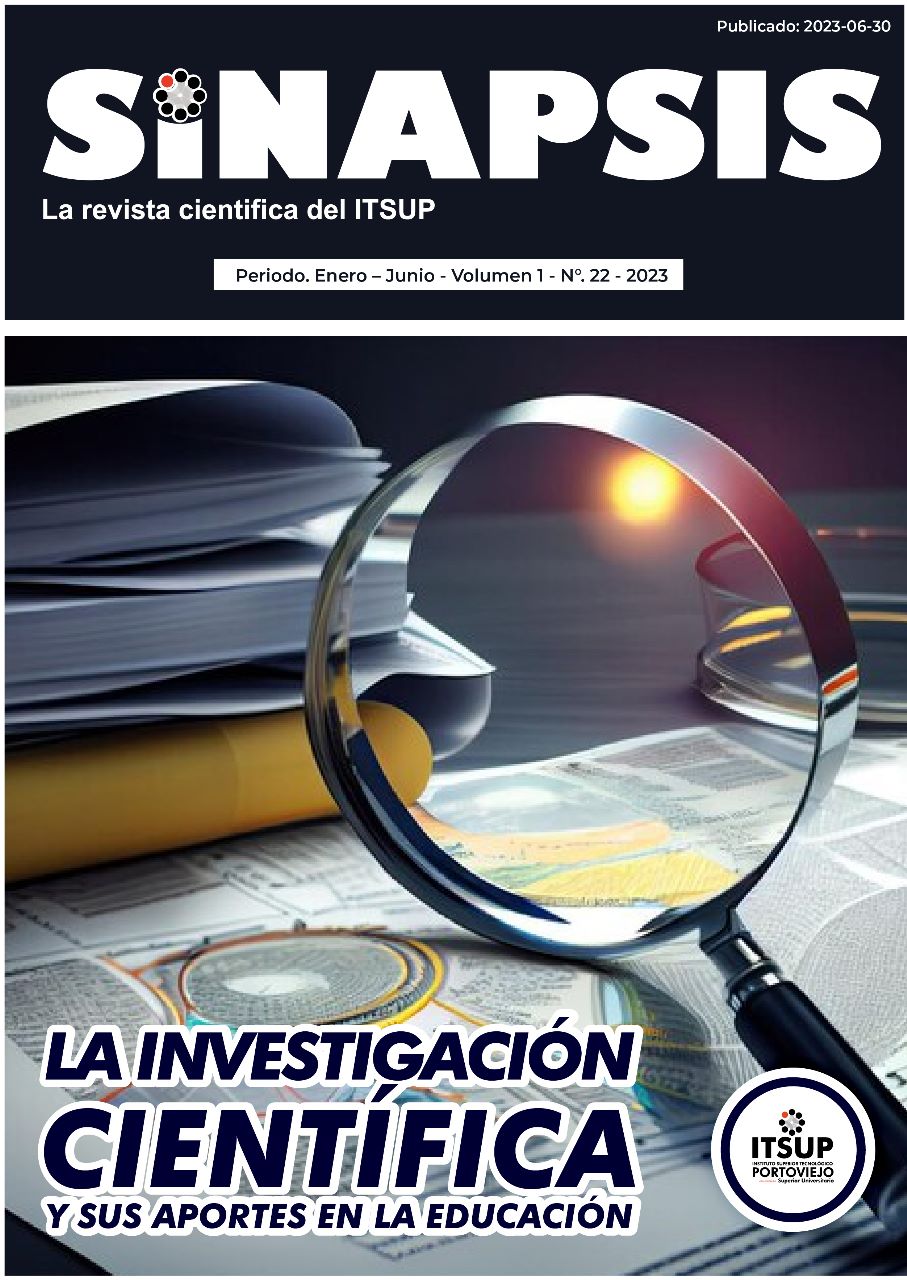Descubrimiento automático de un workflow mediante minería de procesos aplicado a la industria atunera
DOI:
https://doi.org/10.37117/s.v1i22.873Keywords:
algorithms, automation, fuzzy net, petri net, workflow, Process miningAbstract
The importance of the study is based on setting a starting point for the application of process mining in different areas, to verify if processes are being fulfilled in the best possible way. In this research, the starting point is the determination of objectives, collection and cleaning of information, obtaining the event log, validation of the results, and finally obtaining the ideal flow. The objective is to apply process mining for the automatic discovery of workflow in a tuna company, to identify waiting times and bottlenecks within the business flow. Scientific methods, such as historical-logical, analysis-synthesis, and induction-deduction, were used to approach the topic and obtain validated results. The discovery process begins with information cleaning, using ETL with Pentaho, until obtaining the model in ProM and identifying existing bottlenecks in the activities. The impact on society is positive due to the contribution of knowledge on process mining and its application in tuna industries. Finally, it is concluded that the application of process mining becomes necessary and essential when analyzing and optimizing business processes, maintaining a competitive advantage in the market and ensuring customer satisfaction. This research is associated with the project methodology of hazards and critical control points applying process mining.
Downloads
References
Aguirre Mayorga, H. S., & Rincón García, N. (2015). Minería de procesos: desarrollo, aplicaciones y factores críticos. Cuadernos de Administración, 28(50). https://doi.org/10.11144/Javeriana.cao28-50.mpda
Cocconi, D., Pérez, M., Ferreyra, J. P., & Verino, C. (2019). Aplicación de la minería de procesos para determinar recursos computacionales en la ejecución de procesos de negocio. XXI Workshop de Investigadores En Ciencias de La Computación. http://sedici.unlp.edu.ar/handle/10915/77070
Contreras, N., Vergara, C., & Montenegro, Y. (2016). Process Mining para Gestíon de Incidencias en Telefónica Chile. Revista Ingeniería de Sistemas, 30, 20.
Díez Arias, F. (2016). Aplicación de la minería de procesos al análisis y modelado de misiones multi-robot.
Dunzer, S., Stierle, M., Matzner, M., & Baier, S. (2019). Conformance checking. Proceedings of the 11th International Conference on Subject-Oriented Business Process Management, 1–10. https://doi.org/10.1145/3329007.3329014
Evangelista P., M. E., & Coronado T., A. J. (2020). Modelo para la evaluación de variables en el Sector Salud utilizando Process Mining y Data Visualization [Universidad Peruana de Ciencias Aplicadas (UPC)]. https://doi.org/10.19083/tesis/653132
Günther, C. W., & van der Aalst, W. M. P. (2007). Fuzzy Mining – Adaptive Process Simplification Based on Multi-perspective Metrics (pp. 328–343). https://doi.org/10.1007/978-3-540-75183-0_24
Jans, M., Weerdt, J. De, Depaire, B., Dumas, M., & Janssenswillen, G. (2021). Conformance Checking in Process Mining. Information Systems, 102, 101851. https://doi.org/10.1016/j.is.2021.101851
Menéndez, V., & Castellanos, M. (2016). Los Sistemas Gestores de Flujos de Trabajo en la Gestión de Procesos Software. ReCIBE. Revista Electrónica de Computación, Informática, Biomédica y Electrónica, 5(3). http://www.redalyc.org/articulo.oa?id=512253114009
Reinkemeyer, L. (2020). Process Mining in a Nutshell. In Process Mining in Action (pp. 3–10). Springer International Publishing. https://doi.org/10.1007/978-3-030-40172-6_1
Rodríguez G., A. (2017). Workflow y trabajo colaborativo [Universidad de Granada]. https://digibug.ugr.es/bitstream/handle/10481/68513/RodriguezGuzmanAinoaMatilde - TFG.pdf?sequence=1&isAllowed=y
van der Aalst, W. M. P. (2011). Process Mining. In Process Mining (Vol. 136, Issue 2). Springer Berlin Heidelberg. https://doi.org/10.1007/978-3-642-19345-3
Velásquez L., E. E. (2017). Método de Minería de Procesos para incrementar la Productividad para proyectos de investigación de las cajas municipales. http://repositorio.unsa.edu.pe/bitstream/handle/UNSA/4504/IIMveloee.pdf?sequence=1&isAllowed=y
Downloads
Published
How to Cite
Issue
Section
License
Copyright (c) 2023 Carlos Andrés Villacreses Parrales, Dr. Lenin Jonatan Pin García, PhD

This work is licensed under a Creative Commons Attribution-NonCommercial-NoDerivatives 4.0 International License.
El Copyright posee el propósito de proteger tanto la propiedad intelectual de los autores como sus resultados. El comité editorial de la Revista Sinapsis se compromete con los autores a proteger, defender y preservar tanto su trabajo como su reputación, y toma muy en serio las acusaciones de infracción, plagio, disputas éticas y fraude. Si un autor se da cuenta de un posible plagio, copia de resultados, fraude o infracción, le rogamos que se comunique con la mayor brevedad posible con el comité editorial de la revista Sinapsis.
CC BY-NC-ND: esta licencia permite a los reutilizadores copiar y distribuir el material en cualquier medio o formato solo sin adaptarlo, solo con fines no comerciales y siempre que se le atribuya al creador.
Términos de Licencia:
Reconocimiento: debe otorgar el crédito correspondiente, proporcionar un enlace a la licencia e indicar si se realizaron cambios. Puede hacerlo de cualquier manera razonable, pero no de ninguna manera que sugiera que el licenciante lo respalda a usted o su uso.
No comercial: no puede utilizar el material con fines comerciales.
No Derivada: si remezcla, transforma o construye sobre el material, no puede distribuir el material modificado.
Sin restricciones adicionales: no puede aplicar términos legales o medidas tecnológicas que restrinjan legalmente a otros de hacer cualquier cosa que permita la licencia.
El autor esta en la obligación de seguir las exigencias según lo instruido en la licencia ubicada en el enlace: https://creativecommons.org/licenses/by-nc-nd/4.0/deed.es






